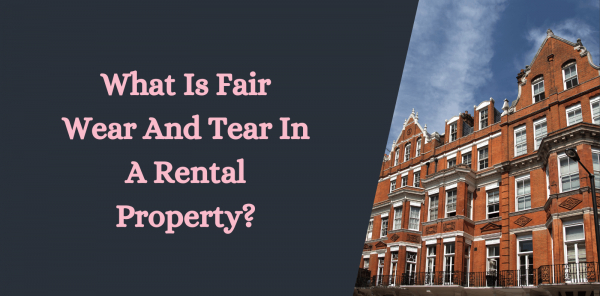Prior to April 2017, if you were a landlord with a mortgage on your property, any interest you paid towards the mortgage payments could be deducted from your rental income before you paid tax on it.
In 2017, the Government began phasing this out by 25 percent each year, the aim being to end it completely by April 2020.
Now, landlords receive a 20 percent tax credit for all their property finance costs. So, how could this change impact your business? And what can you do about it?
What were the old rules on mortgage tax relief?
Prior to April 2020, buy to let landlords were able to claim tax relief on their mortgage interest payments at their marginal rate of tax. For many landlords, this was highly advantageous.
Under the old system, a basic rate taxpayer would get 20 percent tax relief, those at a higher rate would receive 40 percent relief, and top-rate taxpayers could claim 45 percent.
What are the new rules on mortgage tax relief?
Now that the mortgage tax relief is 20 percent for all landlords, for those higher rate taxpayers, the financial implications are significant – for some, they may even be insurmountable.
While basic rate taxpayer landlords have probably experienced no change in profit margins, those on higher incomes are likely to be losing money on mortgage interest payments – and the figures are not small.
According to estimated figures from the Nationwide Building Society, some landlords could now be losing more than 50 percent of their profit. To illustrate this, they use the example of someone with a buy to let mortgage of £150,000 on a property worth £200,000. Under the old mortgage tax relief system, with a monthly rent of £800, this landlord would have a net profit of around £2,160 a year. Under the new system, their net profit plunges to £960 – a decrease of more than 55 percent.
In addition to this, if you’re a landlord with a long-term fixed-rate (usually higher interest), and you factor in stamp duty, the profit margins could be so small, you may decide it’s not worth it. So is it all doom and gloom?
Can anything be done to avoid the reduction in mortgage tax relief?
While many landlords have been hit hard by the loss of mortgage tax relief, the good news is there are things you can do to lessen – or in some cases, nullify – the impact. Although the most glaringly obvious solution might seem to be increasing your rent, as well as this being unfair on tenants, you could quickly find yourself priced out of your market.
If you have been impacted by the loss of mortgage tax relief, here are some solutions to consider:
Switch to shorter-term fixed-rate deals
This is a case of swings and roundabouts.
A shorter-term fixed-rate mortgage will certainly give you lower rates of interest compared to a long-term fixed rate.
However, while they seem financially attractive, shorter-term fixed rate deals do carry more risk.
Once your fixed rate expires, your rate will either convert to the Standard Variable Rate (SVR) or another available fixed rate.
Finding the right mortgage can make all the difference, so it’s a good idea to tap into the expertise of a specialist buy to let mortgage provider who will build a bespoke financial solution tailored to your specific needs as a landlord.
Become a limited company
The main advantage to using a limited company structure for your portfolio is that in doing so, all your rental profits will be taxed at the corporation rate of 20 percent.
In addition to this, you’ll be able to offset your mortgage interest costs against your profits.
The only downside with this option is that you’ll have fewer mortgage options going forward; not all mortgage providers will lend to companies.
Use your partner’s tax advantages if they have a lower marginal rate
5 ways to cope with losing mortgage interest tax relief
If your spouse has a lower marginal tax rate, you could transfer ownership of some or all of your properties to them.
Of course, you need to check that this won’t push their income into the higher tax rate.
Another way you could utilize their tax allowance is by dividing your rental income so that some is paid to you and the rest to your partner.
Turn one of your buy to lets into a holiday home
While there are a number of key differences to navigate between being a buy-to-let landlord and managing a holiday rental home, this option may be a good one to consider; it could have a significant impact on your profit margin. Furnished holiday homes are technically treated as trade. This means that you can offset all your mortgage interest payments as a business expense.
In addition to this, as a ‘trade’, there are other expenses you can offset which will help to reduce your tax liability. If you’re thinking of doing this, make sure to check if your landlord insurance can include this cover.
Move into one of your buy to let properties
One option you could consider is moving into one of your buy to let properties – especially if you have a large mortgage on a certain property. Of course, this may not be a viable option; it’s likely to be dependent on the size and location of your property.
If you’re a family of four and your property is a two-bedroom flat on the eighth floor, you probably won’t want to move in. However, if you do have a suitable property, this could be a solution that significantly reduces your tax liability.
Being a landlord is a business, and like any business, you need to be agile and adapt to external changes. Effective business planning is key to identifying how you can make up for any shortfall in income following the tax change. See how your business plan measures up with our guide and handy business plan template. As part of good business planning, investing in pensions can help reduce your tax base.
SOURCE: Hamilton Fraser






Share this with
Email
Facebook
Messenger
Twitter
Pinterest
LinkedIn
Copy this link